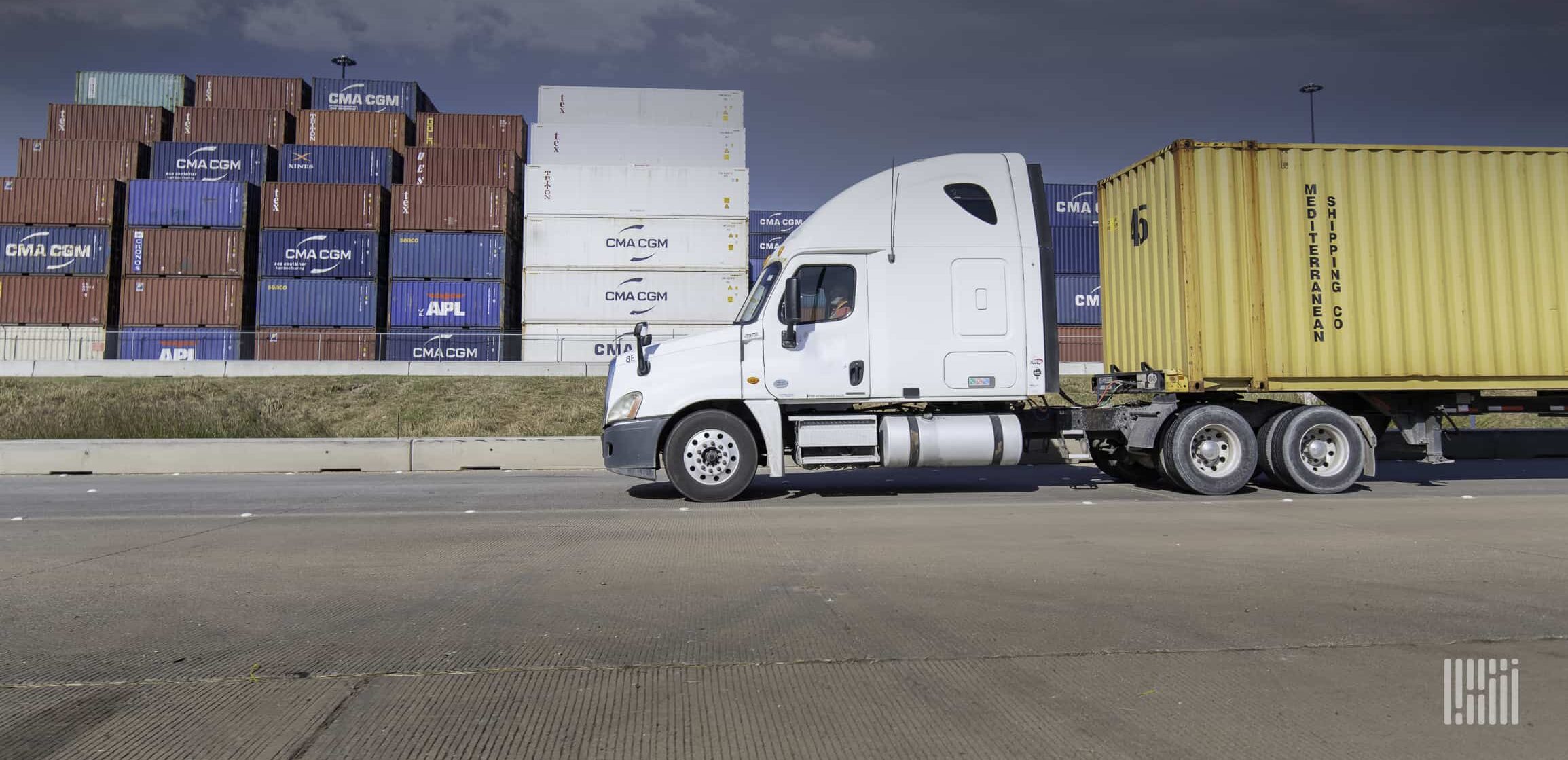Have you been asking yourself “what is drayage, and why is it important?” Then you’re in luck, because you’ll find the answer to these questions and more in the following article.
On a high level, drayage is a freight service that moves goods from one truck to another in a port or at a distribution center. It may also include the movement of goods from a supplier to a retailer, in the form of in-store deliveries. A drayman’s job is to transport cargo from the dockside or quay to warehouses, factories, and other destinations on land.
How Does Drayage Service Work?
The service is necessary because of the limited space at many ports, which means that trucks cannot simply drive up to the docks and load or unload. It involves hauling goods from one point to another on land, which is often a considerable distance away.
It is often necessary to make multiple trips, depending on the size of the load being transported (drayage trucks are specially designed with reinforced axles to handle heavy loads without twisting or damaging them).
Drayage Definition
Drayage is a system of hauling freight overland from one place to another such as the receiving dock (off shore) to the warehouse, factory or truck trailer. It is often part of a larger overall move, for example, from a ship to a warehouse.
Why Is Drayage Service Needed?
They’re required due to limited space at many ports, which means that trucks cannot simply drive up to the docks and load or unload. Instead, drayage services are needed for this kind of transport.
Drayage companies are involved in the loading and unloading of shipments, as well as transportation between terminals or warehouse facilities. This service is especially important when the goods being transported are too big, heavy, or fragile to be moved by hand.
What Is Drayage Capacity?
Capacity, also known as delivery rate, is the number of trucks that can be deployed to carry cargo within a given time period. It is typically expressed in terms of an average number of trips per hour, or total trips per day. Theoretically, the more trucks available, the less each one will need to carry multiple times (also known as “doubling up”).
For example, in many cases a truck is employed only once when delivering a loaded container from a port directly to its destination.
How Is Drayage Cost Calculated?
It’s calculated based on several factors, including the amount of cargo being delivered, the distance travelled, and speed in-transit. Cost can be different per carrier, as well.
Types of Drayage Containers
The industry has an established set of industry-specific containers for specific purposes. The main types of drayage containers include: open top truck trailers (OTTRs), bulk drayage trailers (BDTRs), and refrigerated containers (RC). Open top and refrigerated containers offer the benefits of light weight, wide versatility and the ability to be used multiple times.
The downside of using these types of containers is their lower payload capacity compared to larger box trailers, which may require more frequent stops during a trip.
Example
A common example is a container being transported from a port to a customer’s warehouse by a truck. The goods inside the container are destined to the final destination within a relatively short distance. Thus, they do not require long hauls or large trucks.
Drayage Classifications
There are six types of drayage. Let’s review the types of transportation methods between a cargo facility terminal and the customer’s facility:
Expedited
This type of service allows the cargo to be picked up from a port terminal and delivered to the customer’s site within 48 hours (or less). This service is 25% more expensive than an expedited service.
Inter-Carrier
Inter-carrier is the most common type of drayage service. The cargo is taken from one company to another, but the same carrier transports the goods. This type of delivery takes longer, because of transportation time, than expedited drayage services.
Intra-Carrier
Intra-carrier refers to the transportation of goods within the same company. It runs on a normal schedule and it does not offer guaranteed time. But, it is less expensive than inter-carrier service at 30% lower cost.
Shuttle Drayage
At times, cargo can overcrowd the hub. To remedy this, shuttle drayage employs the movement of an intermodal unit from a hub to another parking lot, since there is no more room at the hub. Loaded and empty cargo units both require this type of drayage.
Pier
Pier drayage, also called “pier to pier,” is the movement of a truck from a terminal or warehouse to another facility. This type allows the cargo to be transported from a terminal to other transportation modes, such as ships. The cargo is left at a pier for other carriers to pick up.
Door-to-Door
A door-to-door drayage means that the company transports the cargo directly to the customer’s facility. This type of transportation is cheaper than through intermodal.
Drayage vs Intermodal
There are two main ways to carry cargo. Drayage is the transportation of cargo from a terminal or warehouse to another location that does not have access to railroad or shipping lines, such as a factory or distribution center. Intermodal freight transport is the movement of cargo across multiple modes such as trucks, trains and ships at least once.
For example, intermodal service transports the goods from a port by truck to a distribution center and then transfers them onto railcars for further transport to their destination.
The Future of Drayage
Drayage is an integral part of international trade. The need for an efficient solution will only increase as the demand for global products continues to increase. Currently, it’s often considered a commodity service. However, there are opportunities for companies to provide additional value to their customers by offering innovative services and solutions.



